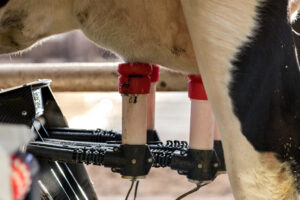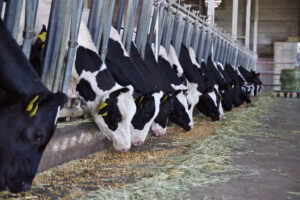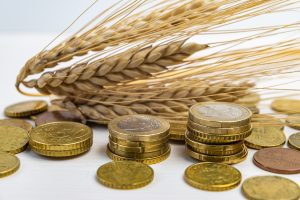The health crisis linked to COVID-19 has consequences on milk prices. With a drop in consumption and exports, the situation in the dairy industry is becoming gloomy. In several countries, dairies have asked for reductions in volume, sometimes it is the law of supply and demand that imposes a rapid drop in the price paid to farmers. This crisis is no exception to the rule of all previous crises: the market demands adaptations that are too quick for livestock farming.

Falling milk prices = Withdrawal of all additives from the ration?
Tensions on the “milk price” have repercussions on the price of feed. The temptation to ask for the withdrawal of all additives from the ration is inextricably linked to each tension. It is part of the simple accounting analysis: reducing costs by removing from the ration what does not seem essential, such as additives. But if this strategy is taken too far, there is certainly a risk of having very low costs, but also of having much lower milk production and therefore less income. Whether or not there is pressure on milk prices and volumes, optimizing income is essential for dairy farmers. The crisis has only changed the levers for optimisation. So don’t throw away all the additives right away.
What parameters are modified by the dairy situation?
The containment policy linked to COVID-19 has a strong impact on the balance of agricultural commodity exchanges and consumption habits. In fact, the dairy industry is unbalanced. In turn, the income of dairy farmers is directly impacted by :
- the reduction in the volume of milk to be produced (drop in turnover)
- the drop in the price of standard milk (drop in sales)
- difficulties in the supply of raw materials such as soybean meal (production costs)
Having lost production volumes, farmers will have to focus on improving feed cost margins by :
- Maximizing the price of milk through quality…
- Reducing feed costs
What additives should be used to maximize milk prices?
Focus on paid quality indicators
In order to maximise milk prices, it is necessary to propose additives that allow an improvement in the paid quality indicators:
- Protein rate
- Fat rate
- Somatic cell count
Making the right choice for milk prices
It is therefore necessary to select an additive able to :
- Support the protein material by a satisfactory supply of metabolizable protein via protein concentrates
- stimulate the production of fat in milk, e.g. when putting out to pasture
- or maintain a rewarding cell count
In a logic of reducing feed costs, it is better to select an additive that has an effect both on the quality of the milk and on the general health of the animal.
Which additives should be selected to reduce feed costs?
Limit the increase in raw material costs
The crisis is also disrupting soybean meal trade, which has made prices very volatile, with a peak at the end of March. The use of additives based on active plant ingredients in combination with other sources of protein limits a potential increase in the cost of protein concentrate formulas, which are essential for ration balance.
Limiting the risk of seasonal acidosis
Grazing is a time when the risk of acidosis increases: controlling the ruminal pH is crucial to rumen efficiency and health. Also, the cow will ingest a higher proportion of fibre through grazing as such but also through fibrous meals to slow down transit. Getting the most out of these fibres is an opportunity to benefit from a relatively safe source of energy and to improve the fat rate of milk, which is very much in demand today.
To free animals from the economic situation
A cow is not a milk factory.
Ruminants are animals that are particularly dependent on their microbiota. This microbiota is itself sensitive to changes in formulas but also to the presence of certain additives. Adaptations of this microbiota to each evolution take several weeks and are not always easy to do.
Preserving your livestock
Unfortunately in our environment, economic priorities change quickly and come too fast for animals. If we have to deal with this system, then we must protect ruminants from these rapid changes by making them more agile. It is not a question of finding one additive for periods of low production, another for periods of high demand, a third to make more fat or more proteins… It is a question of strengthening animals and making them more adaptable. Because if today we have to focus on quality, tomorrow we will have to increase production as quickly as we have had to decrease it. So who will be ready the fastest?





